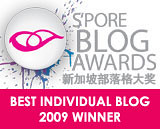Have you ever wonder why the Cantonese usually called soft drinks as “Holland Water” (Ho Lan Shui, 荷兰水) in the past?

I remember Victor had a related post on this in his blog, and he mentioned something like “originated from a Hokkien who while entertaining a visiting guest, called out to someone in the house to ‘hor lan chui’ which means ‘serve the guest water’ ” which Chun See dismissed it as plain nonsense. Of course there are some that think “Hor Lan Shu” was first produced or invented in Holland…

Credit : 现代快报
Here is a bit of the history on soft drinks. It all depends on how you look at soft drinks – “non carbonated water” or “carbonated water”.
The first soft drinks to be marketed appeared in 1676 (17th century) which is a mixture of water and lemon juice sweetened with honey. The company “Compagnie de Limonadiers” was formed in Paris and granted a monopoly for the sale of its products. Vendors carried tanks on their backs from which they dispensed cups of lemonade. This is the first version of “non carbonated” soft drinks.
Soft drinks are also referred to as carbonated drinks that are non-achoholic and thus the term “soft drinks” is employed in opposition to “hard”, i.e. drinks with high alcoholic content by volume. In 1767, Dr.Joseph Priestley (an Englishmen) invented the first drinkable man made glass of carbonated water.

Dr.Joseph Priestley
His invention was meant as a cure for scurvy (a kind of disease caused by lack of vitamin C) for the crew in James Cook’s second voyage to the South Seas.
Dr.Priestley did not exploit the commercial potential of this carbonated soft drinks, but Johann Jacob Schweppe, a German-born jeweller but amateur scientist, did in 1770 (late 18th century).

Johann Jacob Schweppe
J.J. Schweppe moved his business to London in 1792 but was not successful and failed in 1795. OK, so much for the history of soft drinks.
In fact this post is a bit related to my previous post on “Holland or Netherlands“. Remember I mentioned about The Dutch East India Company (Vereenigde Oost-Indische Compagnie or VOC) established in 1602, and was granted a 21-year monopoly to carry out colonial activities in Asia. The Dutch East India Company beat all of its rivals in the Asia trade. Of course Holland was not the first to trade in China, in the 13th and 14th centuries, a number of Europeans mainly Christian missionaries sought to penetrate China. One of the famous one was Marco Polo then, but all these had little permanent effect on the East-West trade.

Marco Polo
The Portuguese succeeded in finding new sea route for a cheaper and easier access to South and East Asia goods. The first Portuguese ships reached Canton on the southern coasts of China in 1516. By 1557, they gained a permanent base in China at Macau. But the Portuguese maritime supremacy still lose out to the Holland in the 17th century. This posed a serious challenge to Portugal with the establishment of Dutch East India Company.
Below shows the Dutch East India Fleet in 1599;

Credit : National Maritime Museum, London
The Dutch East India Company colonies or outposts were also established in Canton, China and Taiwan (1624 – 1662). But in 1662, Zheng Chenggong expelled the Dutch from Taiwan. By 1669, the Dutch East India Company was the richest private company in history, with a huge fleet of merchant ships and warships, tens of thousands of employees. They were confined to trade only in Canton and Macau from the 16th century to 18th century.
Below shows ships off Canton circa 1847-1856;

Credit : National Maritime Museum, London
By the 18th Century, the number of merchants who came to China increased. As you remembered, the soft drinks were already commercialised during this period and were brought into China via Canton by the Holland merchants.
So the people in Canton termed such soft drinks as “Hor Lan Shui” (荷兰水).

Below shows selling of Mint drink “薄荷水” passing off as “Hor Lan Shui” in China;

This “Hor Lan Shui” (荷兰水) was mentioned in a 1876 book titled “沪游杂记” in Shanghai.
The book “沪游杂记”;

Along with soft drinks, potatoes and snow peas were also brought into Canton by the Holland merchants.


Thus the word “荷兰薯” for potatoes and “荷兰豆” for snow peas. It was a common practice to term the products or goods from the countries that brought them in – in this case Holland.
But now, are there potatoes and snow peas really from Holland? Guess….But when someone said you “饱死荷兰豆” (literally translate – full until die snow peas) it means you are really stupid and silly. When someone said something silly and stupid, we said “饱死” to ourselves in cantonese. As to how “荷兰豆” also means stupid and silly, it is actually translated into “Holland Bean” which means “好伦笨” in Cantonese tone and that “伦” is rather vulgar in Cantonese. So “好伦笨” also means “very stupid”. In full, “饱死荷兰豆” means you are silly and stupid. This phrase was very popular in the 80s but not so now.
Now do you think that we Cantonese really like to relate a lot of things to Holland? Before I end, just to let you know that the Cantonese also called playing cards as “荷兰牌”, why?

Haha why is it known as “荷兰牌”, I really don’t know – do you?

What my father wrote;
“He who pays the piper calls the tune.”
“出资的人作主.”



Recent Comments